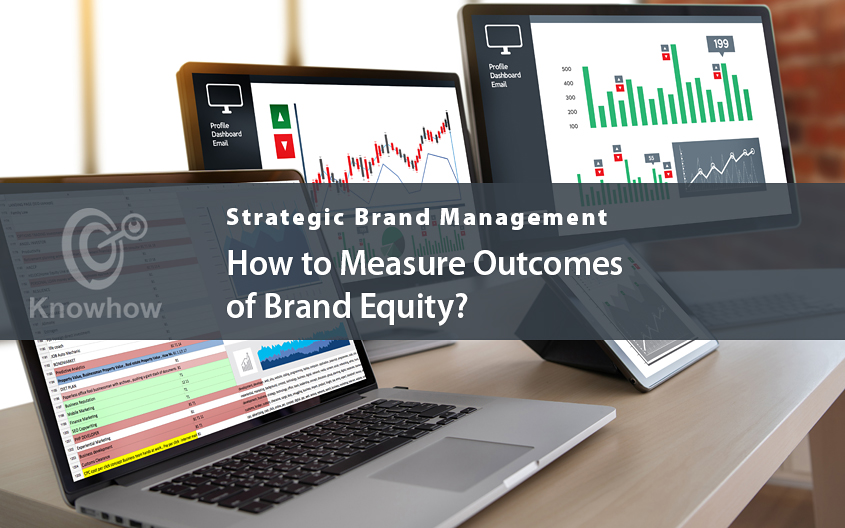
Measuring the outcomes of brand equity should be done at the source. You can choose one of two types of methods that measure one dimension of brand equity at a time:
The Qualitative Research Methods
These are used to measure brand association by recording the consumers’ perceptions of the brand.
The Quantitative Research Methods
Provide insight into brand awareness in the minds of consumers.
However, while both types of methods are useful, they are one-dimensional, while brand equity is multidimensional. Therefore, it’s only logical to assume that to be effective, measuring of brand equity has to combine both methods. All the available measuring methods will prove useful when you are designing your future marketing programmes.
How to Analyse Brand Equity?
Comparative Methods
Comparative methods measure the effects that marketing programmes have on consumer’s perception of the brand. They do it by comparing brand awareness. It’s important to note that comparative methods are research methods. They measure brand equity that correlates to brand association and high levels of brand awareness.
There are different types of comparative methods that can be applied, depending on the brand’s usage of marketing. For example, there are brand-based, marketing-based, and conjoined comparative methods.
Brand-Based Comparative Methods
Brand-based comparative methods measure the response that consumers have to the similar marketing efforts of different companies. So these methods basically compare your marketing efforts to the marketing efforts of your direct competitors, industry leaders, or non-existing brands.
The most famous example of this comparative method is Larry Percy’s experiment. Percy concluded that knowing the brand of the product deeply influences your opinion on the quality and the overall product itself. By disclosing (or not disclosing) the brand names of products, Percy found that brand loyalty is higher when people are aware of the brand.
The downfalls of these methods are that it measures only the isolated value of the brand name. These methods are useful if you’re looking to change your marketing programme and want to predict how that might affect the future outcome.
Marketing-Based Comparative Methods
Marketing-based comparative methods measure the difference in the outcome of different marketing strategies implemented by the same brand, for the same products. These methods focus on the levels of influence different marketing programmes have on the overall brand performance.
Let’s take different price ranges as an example. Comparing prices with competitors and analysing how their pricing strategy influenced the brand equity is really important. It will help you find the consumer’s breaking point and their level of tolerance — the point when they abandon brand loyalty due to high prices and switch to a different brand.
These methods can also help you understand how customer responses vary in different locations. What’s more, these methods can be applied always, no matter what your marketing strategy is. However, marketing-based comparative methods can’t determine the consumer’s preference. In other words, they can’t pinpoint whether the consumer has a preference toward a certain brand or toward a specific product category.
Conjoined Comparative Methods
Conjoined comparative marketing methods combine both comparative methods. They analyse both the brand and the marketing efforts. Because they are so extensive, these methods allow you to analyse different brand attributes and brand associations, as well as their interdependent relationships.
Conjoined comparative methods have a big disadvantage — they are known to increase customer’s expectations.
Holistic Methods
These methods see brand equity as a whole entity and measure its entire outcome. These methods focus on everything that can affect the overall brand equity. They analyse the loyalty of a brand’s customer base, marketing communication, distribution channels, and points of similarity and differentiation that set the brand apart from its competitors.
Holistic methods are ideal for determining the financial value and the utility value of the brand. The focus is on brand preference rather than the customer’s response.
A particular holistic method, the residual method, only focuses on brand equity after it removes physical attributes of the brand from the equation. Furthermore, the evaluation holistic approach only focuses on the financial aspect of the marketing programmes — merger/acquisition programmes, sponsorships, fundraisers, etc.
Both methods are effective, although they focus on different features. The comparative methods focus on measuring brand equity through customer response, while the holistic methods take on a different approach and measure customer preference. However, both types of methods can be used as good indicators of future ROI.
Related content:
Strategic Brand Management Knowhow – learn more about strategic brand management with our collection of informative educational articles.
From business promo logo pens, UK printed mugs, water bottles, technology products, printed notebooks, toys and novelties and paper products, here at GoPromotional we believe that you are sure to find the perfect branded merchandise to help successfully market your brand.
If however, you require further information or have any specific questions, don’t hesitate to give a member of our experienced team a call on 0800 0148 970 or simply email us today.






